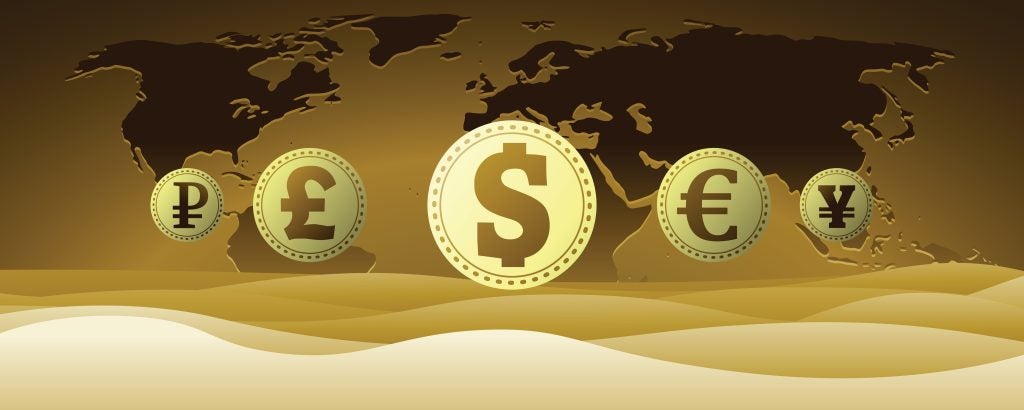Operating globally and capitalising on revenue based on the opportunities that foreign markets offer is becoming a necessity in today’s ecommerce landscape. Cross-border ecommerce expansion can help companies take their business to the next level and stay competitive.
With so many opportunities for international expansion, businesses might find it hard to pinpoint their new market. That’s where data collection about the market size, industry opportunities, trends, and fraud risks can help map out a robust strategy.
The four key global ecommerce markets to examine for cross-border payments and ecommerce expansion are North America, Europe, China, and Latin America.

North America – the Big Apple for ecommerce
North America is providing ample opportunities to expand in the region, and its whopping $1.58trn of ecommerce sales just in the first quarter of 2021 are alluring to businesses. The US is the second-largest market in the world and the first in North America, followed by Canada, so these two markets are ideal for new players looking to further accelerate their growth.
The three top sectors in NORAM with the highest revenue in 2022 are toys, hobby, and DIY; fashion; and electronics, and businesses in those industries stand a high chance of flourishing in the region.
How well do you really know your competitors?
Access the most comprehensive Company Profiles on the market, powered by GlobalData. Save hours of research. Gain competitive edge.

Thank you!
Your download email will arrive shortly
Not ready to buy yet? Download a free sample
We are confident about the unique quality of our Company Profiles. However, we want you to make the most beneficial decision for your business, so we offer a free sample that you can download by submitting the below form
By GlobalDataDigital buyers prefer marketplaces
In NORAM, digital buyers, who are the leading shopping cohort, are mainly heading to marketplaces to do their shopping. In the US, Amazon is the most popular platform with 2.5 billion monthly visits as of May 2022, followed by eBay (940 million), and Walmart (450 million). Canada is also experiencing the so-called “Amazon Effect”, which is changing the retail game.
What this means for businesses in the region is that they are being held to higher standards by consumers, who are expecting a seamless shopping experience. What this frictionless online journey entails is premium services, such as same-day delivery and express checkout, which are a standard for retail giants and marketplaces. As such, new businesses expanding into North America need to be up to par with the ecommerce shopping journey standards.
The good news is that as buyers are becoming more eco-conscious, they’re starting to support independent retailers more and using Amazon as a search tool for new brands they can shop directly from.
E-wallets to replace credit cards
NORAM is a great place to expand into for those businesses that have a digital-first approach. At the moment, the most preferred payment method in the region is a credit card. However, things are about to change as the digital-first mindset in the U.S. is helping make the shift to e-wallets. They are expected to become the primary payment method in ecommerce by 2025, rising from 38.2% in 2020 to 53.2%.
Synthetic identities dominating the fraud landscape
When operating a business overseas, the foreign market’s fraud profile can present a big challenge to merchants. That’s why it’s important to understand the fraud landscape in each region.
NORAM has a higher fraud rate than businesses in Europe, the Middle East, and Africa, and it’s not going down. That’s why merchants expanding into the region need to be equipped with the best fraud solution to detect and prevent fraudulent attacks, thus combating revenue losses.
The biggest fraud challenge for merchants in NORAM is synthetic identities. To mitigate it, businesses need to adopt a multi-layered approach that leverages solutions across various consumer touchpoints, including digital identity, physical identity, and transaction risk.
Europe: a fast-growing region that offers economic stability
Cross-border ecommerce expansion in Europe is one that attracts many businesses. Its economic stability, links through the EU, EEA, and Schengen Agreement, and the free movement of goods that comes with that are appetising to merchants hungry for a global ecommerce share.
Europe’s ecommerce market is growing at its quickest rate ever. In 2021, ecommerce sales were valued at $731.73bn, and that figure is projected to peak at $1.22trn by 2025.
The European region with the highest ecommerce turnover as of 2021 is Western Europe (63%), followed by Southern Europe (16%) and Central Europe (10%). There are four countries that are generating 60% of the total European ecommerce revenue: the United Kingdom, Germany, France, and Italy.
In Europe’s emerging countries, pharmaceutical companies are having their moment, while in the UK, fresh food categories have been fuelling online growth since 2020.
Customers value a convenient shopping experience
Similar to North America, consumers in Europe favour marketplaces when it comes to their shopping behaviours. Alongside Amazon, ecommerce platforms that are trending in Europe include ASOS, Allegro in Poland, Cdiscount in Belgium, Germany, Italy, and Spain, and Emag in Romania and Bulgaria.
The popularity of such ecommerce platforms is creating higher standards for a more efficient and frictionless customer experience that incorporates convenience, speed and reliability of shipping, delivery tracking, a good returns policy, and in-stock availability of product(s).
Consumers also prefer to shop from local retailers because they value loyalty and quality. In order to meet this requirement, international businesses are encouraged to localise their products and content.
Embracing the digital revolution
The Covid-19 pandemic gave a significant boost to the ecommerce revolution in Europe.
As a result of the desire for a convenient shopping experience, mobile commerce (mcommerce) is on the rise. In the UK, for example, 66% of orders are made via a smartphone as of the second quarter of 2022.
Payments digitisation is also overtaking the European ecommerce landscape with digital wallets, such as PayPal and Alipay, being the most preferred payment method by 42% of shoppers, followed by credit and debit cards. Some countries are also incorporating their own digital payment methods. In the Netherlands, for example, the national online bank transfer payment system iDEAL has an estimated 56% market share.
Europe’s golden era of fraud
During the Covid-19 disruption, Europe experienced a boom in fraud attacks, fuelled by the change in the European payment regulation. Fraudsters became more sophisticated and started targeting more vulnerable links, such as account creation, account login, and payment forms. Return fraud, synthetic identities, and fraudulent fulfilment disputes are also flourishing.
That calls for the adoption of an all-around fraud solution that leverages historical data about transactions and customers’ profiles, as well as an automated order review process.
China – tapping into the world’s largest ecommerce market
In recent years, China has become a global ecommerce giant, and in 2021, the country accounted for 52.1% of all retail ecommerce sales worldwide. Its huge ecommerce impact is mainly due to its emphasis on digitisation. With immense growth potential, China is a hotspot for merchants looking to expand internationally, especially for those willing to embrace digitisation.
A digital-first strategy fuels the world’s largest ecommerce market
China is much different than the rest of the global markets in that it reinforces its own home-developed platforms, payment methods, and tools. What makes them so successful is the implementation of innovative technology and forward thinking into the making. China is home to the world’s most digital buyers – 824.5 million as of 2021, which is a 38.5% share of the global total. The primary consumer cohort is the younger generation that is driving the digital ecommerce revolution forwards.
It comes as no surprise that their most preferred payment method is digital wallets, accounting for 72.1% of ecommerce shares. The most popular digital wallet services are AliPay and WeChat Pay, which are owned by the two major marketplaces in China – Alibaba and Tencent. They, alongside JD, have been dominating the ecommerce space and setting an example for a seamless shopping experience. In retrospect, in 2022, Alibaba has occupied over 60% of China’s cross-border import online retail market.
A particular online shopping trend has been reinforced by the younger generation in China – livestream ecommerce. It allows buyers to see the products in detail via a video and have their questions answered in real time. This type of experiential shopping has accounted for 10% of China’s ecommerce revenue with 245.8 million buyers in 2020 when brick-and-mortar shopping was limited. Nevertheless, is it still going strong, and by the end of 2023, over 45% of younger digital shoppers are expected to embrace this trend.
China’s appetite for foreign merchants
Chinese shoppers have a high appetite for foreign businesses due to several factors. First and foremost, they’re looking to buy higher-quality and long-lasting products. Shopping for original products, reaping lower prices, and looking for something unique that’s not available in their home market are also key drivers for them.
The sectors that are driving the most ecommerce revenue in 2022 are electronics; fashion; and toys, hobby, and DIY.
What’s important to remember is that Google isn’t the most preferred search engine in China. In fact, it only has a 3% market share, while the local search engine Baidu is leading with 75.54%. This means that merchants will need to implement robust content and product localisation into their SEO strategy in line with Baidu.
The rapid ecommerce and technological revolution opens doors to more fraud attacks
The most popular fraud type in China is account takeover. The ecommerce revolution is happening at such a rapid pace that the country finds it hard to keep up with emerging fraud attacks. By implementing a robust fraud solution that leverages machine-learning and historical transaction data, merchants will be able to stay on top of fraud.
Latin America: the world’s fastest-growing ecommerce region
Embracing the ecommerce revolution is a precedent in Latin America, where consumers have been historically reluctant to switch to online shopping. But with the increasing online presence, over 400 million potential ecommerce users online as of January 2022 to be precise, and the growing population of the region, the LATAM ecommerce market is becoming more and more lucrative for merchants hopping on the cross-border ecommerce expansion.
In 2021, Latin America generated $85bn in ecommerce sales, a 25% increase from $68bn in 2020. The largest contributor to ecommerce revenue in the region is Brazil ($26.1bn in 2021), followed by Mexico ($23.2bn in 2021). Chile, Colombia, Peru, and Argentina also provide good investment options.
A growing market to tap into
As the world’s fastest-growing region for ecommerce, Latin America offers ample opportunities for independent retailers in a highly fragmented market. In order to gain customers’ trust, brands need to implement content and product localisation. LATAM consumers are also embracing digital. In 2021, 65% of Brazil’s ecommerce purchases were made via mobile devices, which is giving rise to mcommerce.
Brazil’s online consumers are taking a keen interest in international shopping, as 57% of them shop cross-border. Their motives behind the trend are better prices, the opportunity to discover new and interesting products, and items that aren’t available in their market. The main sectors Brazilian customers make cross-border purchases in are clothing/apparel, consumer electronics, and cosmetic/beauty products.
One thing merchants need to keep in mind is that it may be difficult to penetrate the Brazilian ecommerce market due to high import taxes, strict customs and duty regulations on foreign goods, and slow customs processes.
While digital wallets such as PayPal, domestic player Mercado Pago, Visa Checkout, and Masterpass are gaining momentum in Mexico with a 27.7% share of transactions in 2021, credit cards are still the most preferred payment method in the country (45%) and the rest of Latin America.
Adopting a tailored fraud prevention solution
Latin America’s rapid ecommerce growth matched with its financial instability are giving way to more fraud attacks. To combat that, merchants need to adopt a tailored fraud prevention strategy that takes into account each sector’s individual buyer persona and leverages machine learning to optimise the review process.
Cross-border ecommerce expansion offers merchants the opportunity to gain global recognition, which will only increase the brand’s legacy in its home country. The end goal is clear – revenue optimisation – and by selecting the right market for your industry, you can have a successful international expansion journey.
Signifyd’s e-book How to go global in 2023 is available via this link

Amal Ahmed is Director of Financial Services and EMEA Marketing at Signifyd







